The Transformative Power of Art in the City
If there’s one thing we’ve learned over the last nine years of working with hundreds of businesses and artists, it’s that art has the power to transform spaces.
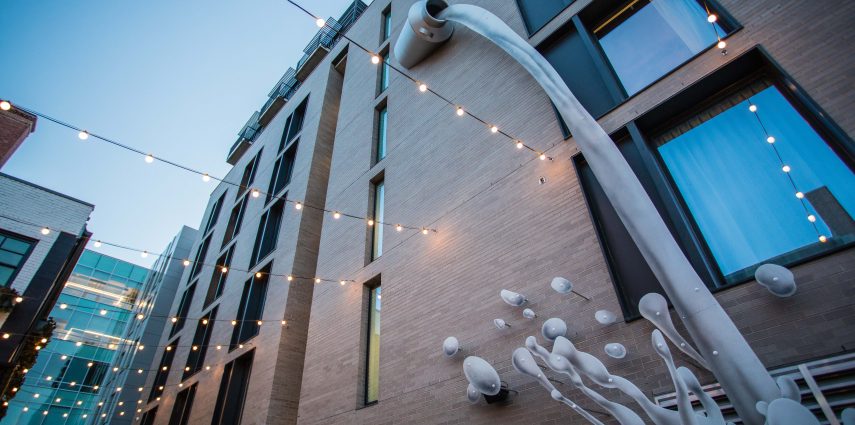
Whether it’s in the public realm or specific to a private development, art elevates the experience of the built environment, providing intrigue and inviting people to become curious about their surroundings.
Art tells the story of humanity and provides our cities with a life force to drive creativity and connection. Here are a few key benefits:
- Art adds character to a place. An art program can help define a space, whether it’s a corporate office building, hotel or marketplace. A unique, beautiful display can create intrinsic value for the people who use it.
The art program at Dairy Block, for instance, enhances the development’s identity as a place that celebrate today’s makers and creators. The activated alley gives pedestrians the freedom to browse shops and restaurants, while exploring interactive art installations. “Spilt Milk” by George Peters and Melanie Walker honors the venue’s history as a cornerstone creamery in the late 1800s. Inside The Maven Hotel, a ten-foot hand made from reclaimed wood – The Quantifiable and the Ineffable by Andrew Tirado – hangs in the lobby, paying homage to George Nakashima, one of the fathers of the American craft movement.
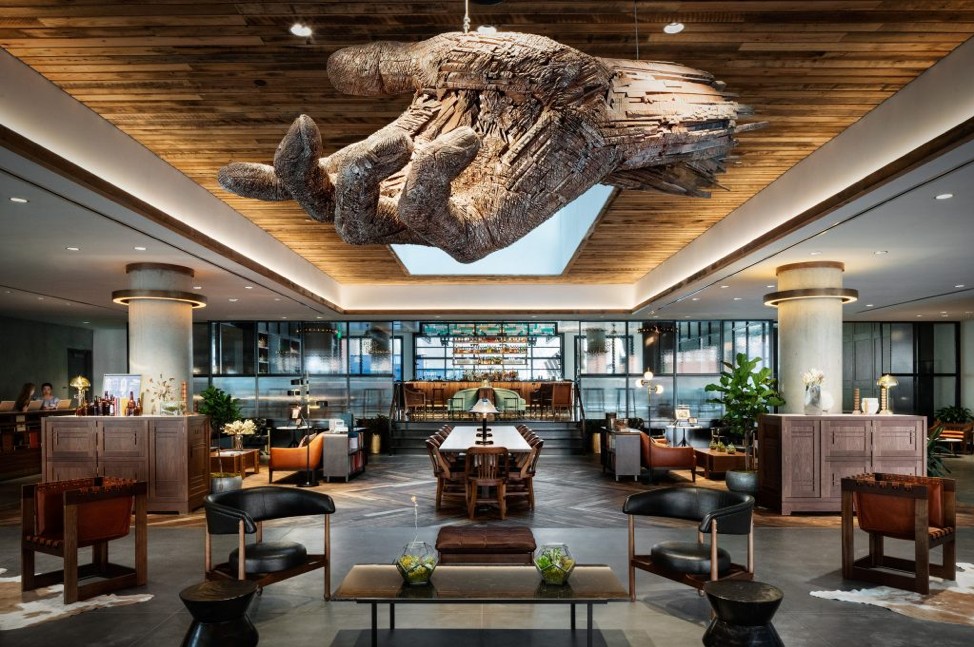
- Art can build connections with different audiences. No matter your race, gender or sexual orientation, art has the power to bring us together, inspiring conversations and making us explore topics from a different perspective.
At Denver Union Station, Stuart Semple introduced an incredibly powerful interactive piece of art called “Emotional Baggage Drop.” This audience-led installation explored ways to alleviate stress and feelings of isolation through the social benefits of trusting strangers. At this private booth, people were invited to confidentially unload their burdens with a stranger who, in turn, listens to and accepts their emotional baggage. By bringing strangers together and asking participants to share personal hardships, this artwork aimed to create trustful human interactions.
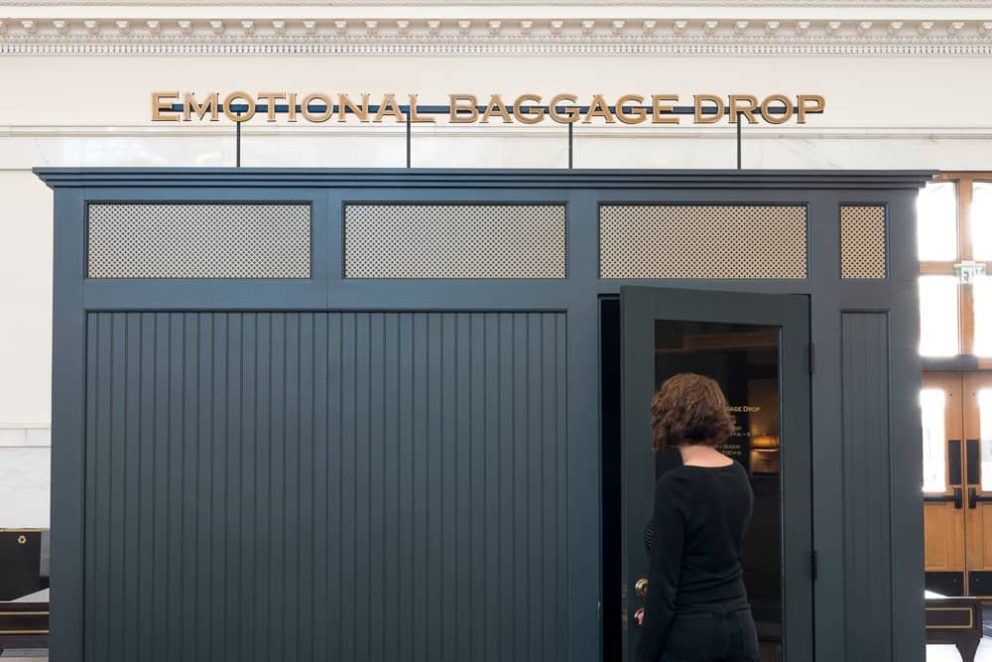
- Art does wonders for employee morale, boosting productivity and creativity in the workplace. Similar to the benefits of incorporating environmentally-friendly design elements, art also contributes to the health and wellbeing of the people who use the space.
At FourPoint Energy’s new Denver offices, NINE dot ARTS worked closely with the company’s CEO and top geologist to develop an art program geared towards attracting top talent. Inspired by FourPoint Energy’s exploration, energy and entrepreneurial spirit, we commissioned site-specific works by artists who investigate the relationship between art and science. The resulting collection captures FourPoint Energy’s character and culture through a wide variety of artistic mediums including oil paintings, photographs, works on paper and sculptures from predominantly Colorado-based artists.
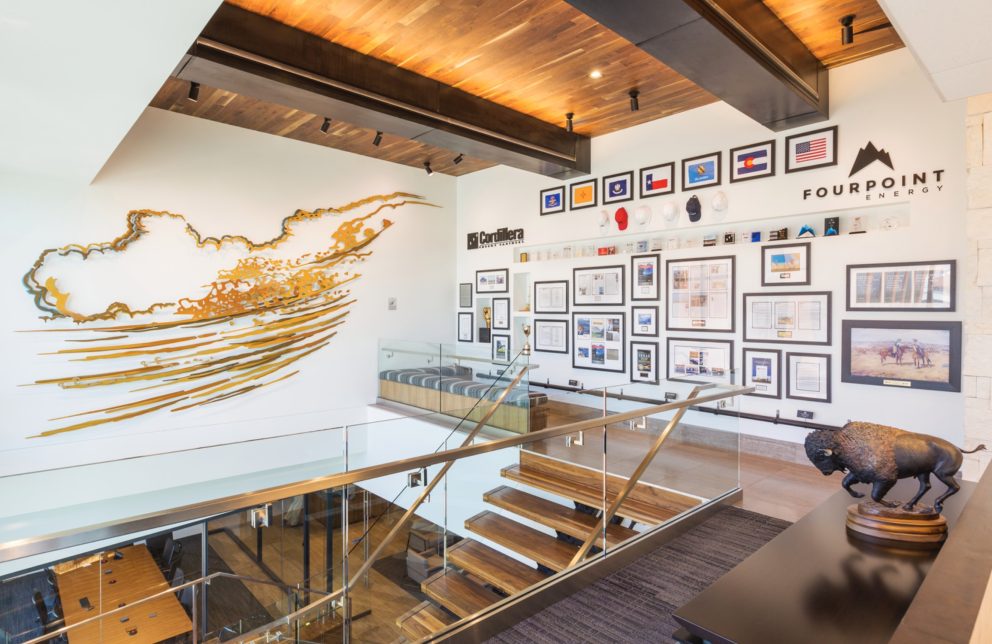
- Art can be used as an educational tool. At times, it can be the best and easiest way to teach others about something for the first time.
The Blue Trees project brought together people of all ages and backgrounds to paint 150 trees across downtown Denver blue using a biologically-safe, water-based, non-permanent color. This environmental art installation provided a whimsically beautiful sight in downtown and helped showcase the importance of trees in an urban environment. It certainly sparked lively discussion and educated our community about the implications of deforestation in an interactive way.
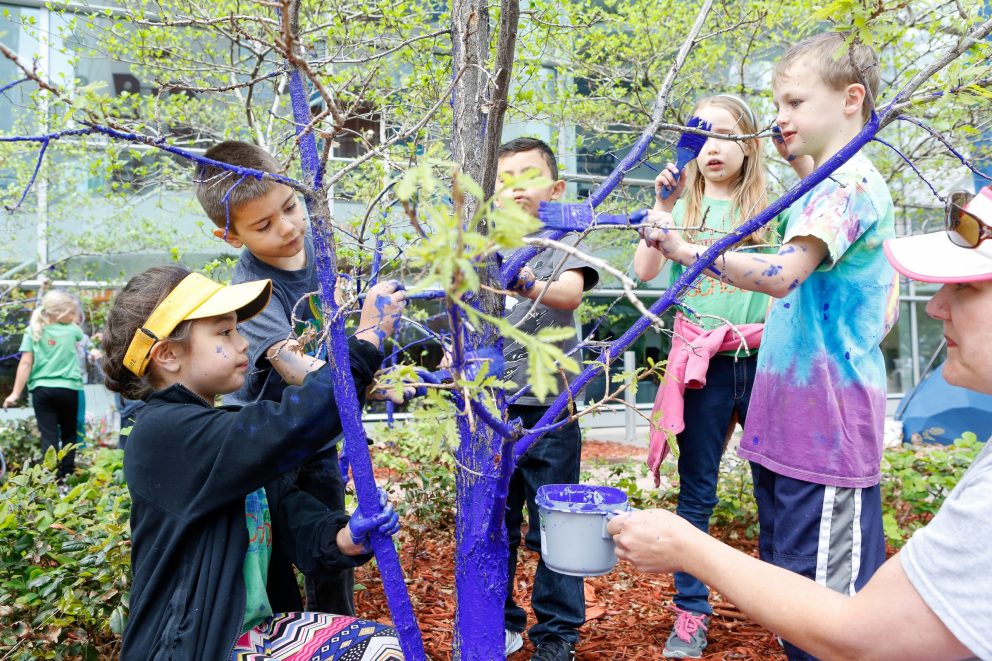
Art is undoubtedly good for the soul, and as more businesses learn to embrace and capitalize on its power, our cities will become even more vibrant and kinetic, inspiring people to stop, reflect and create in their own unique ways.